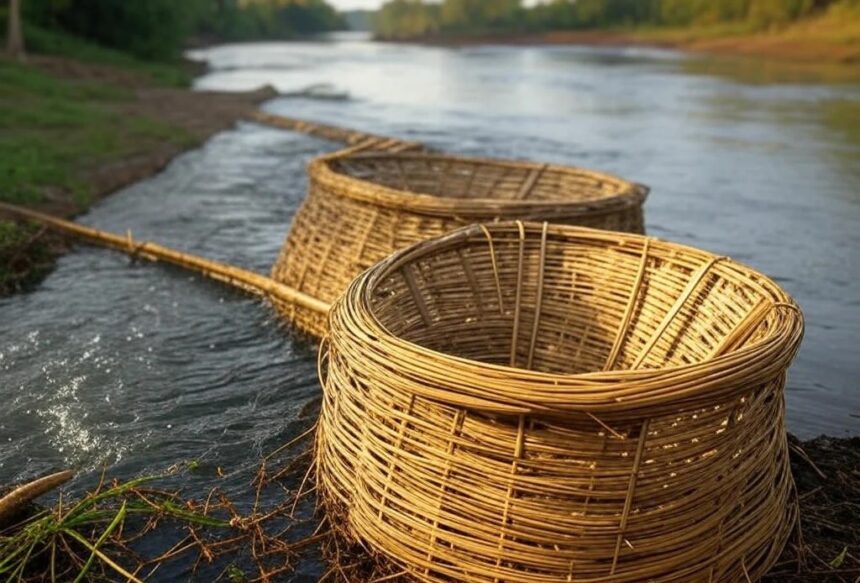Maintaining a canoe’s drainage system is essential for preserving the vessel’s longevity, safety, and overall performance. One of the most vital components of this system is the canoe drain strainer, which plays a significant role in preventing debris from obstructing the drainage outlets. In this comprehensive guide, we will explore the different types of canoe drain strainers, their materials, installation procedures, benefits, and maintenance best practices to ensure that your canoe remains in optimal condition for many adventures.
What is a Cedazo para Canoas?
Cedazo para Canoas is a specialized device designed to filter out debris like leaves, twigs, and dirt that could clog the drainage system of your canoe. It is installed at the drainage points or scuppers, ensuring that water from rain, splashes, or the environment is efficiently directed out of the canoe, keeping it dry, balanced, and safe to use. By preventing blockages, a drain strainer plays a crucial role in maintaining the stability and functionality of the canoe during use.
The Role of Drain Strainers in the Canoe’s Drainage System
Canoes are designed to collect water from the environment, such as rain or waves. Typically, this water is directed toward a drainage system to prevent excess water from accumulating inside the canoe. Without a proper drainage system, excess water could disrupt the canoe’s balance, increasing the risk of tipping over or capsizing. The drain strainer ensures that debris does not clog this system, allowing the water to exit seamlessly and preventing any buildup inside the canoe.
Why Do You Need a Cedazo para Canoasr?
There are several reasons why a drain strainer is essential for every canoe, particularly if you are navigating in natural bodies of water such as rivers, lakes, or oceans.
1. Prevents Clogging of the Drainage System
When you’re paddling in natural water bodies, debris such as leaves, twigs, and dirt can easily enter the canoe’s drainage points. If left unchecked, this debris can clog the system, making it harder for water to drain out of the canoe. This could cause the vessel to become waterlogged, negatively impacting its buoyancy and stability. Installing a drain strainer ensures that only water passes through while the debris is filtered out, preventing blockages.
2. Enhances Safety and Stability
Water that accumulates inside a canoe can cause it to become unstable and increase the risk of capsizing. By using a drain strainer to filter out debris and allow for better water drainage, you help maintain your canoe’s stability. This is particularly important when you are out on a body of water with unpredictable conditions.
3. Reduces Maintenance Efforts
Without a drain strainer, you might have to manually clean out the drainage outlets after every paddling session, which can be time-consuming and frustrating. A drain strainer helps reduce the need for constant cleaning by preventing debris from entering the system in the first place. This makes maintenance far easier and quicker.
Types of Cedazo para Canoas
There are several types of canoe drain strainers available in the market, and each serves a different purpose. The type of strainer you choose will depend on your specific needs, the conditions in which you paddle, and your canoe’s design.
1. Fixed Strainers
Fixed strainers are permanently installed at the drainage points of the canoe. These strainers provide long-term reliability and are typically integrated into the canoe’s hull or scupper. Fixed strainers are ideal for canoes that are regularly used in bodies of water with high debris levels.
2. Removable Strainers
Removable strainers, as the name suggests, can be detached for cleaning and maintenance. These strainers are ideal for canoes that are exposed to varying levels of debris. After each paddling session, you can remove the strainer to clean it out thoroughly, ensuring that it continues to perform at its best.
3. Universal Fit Strainers
Universal fit strainers are designed to fit a wide range of canoe models, making them a versatile option for those who may have more than one canoe or kayak. These strainers are easy to install and replace, making them a convenient choice for most canoeists.
Materials Used in Cedazo para Canoas
The material of the drain strainer is essential for its performance and durability. Depending on the material, strainers offer different advantages and are suited to various environmental conditions.
1. Stainless Steel
Stainless steel is one of the most popular materials for drain strainers. It offers excellent resistance to corrosion and rust, making it ideal for use in both freshwater and saltwater environments. Stainless steel strainers are known for their strength, durability, and longevity, ensuring that they will last for many years even in harsh conditions.
2. Nylon
Nylon strainers are lightweight and flexible, making them easy to install and use. Although nylon is not as durable as stainless steel, it is still resistant to corrosion and offers good performance in mild conditions. Nylon strainers are often used for canoes that are frequently exposed to fresh or calm water conditions.
3. PVC
PVC strainers are commonly used because they offer a good balance of durability and cost-effectiveness. It is resistant to corrosion, and PVC strainers are typically more affordable than stainless steel options. They are often used for casual paddlers who do not require the highest level of durability but still want a reliable strainer.
4. Bronze or Brass
For those seeking a more robust and high-end material, bronze or brass strainers are an option. These materials are corrosion-resistant and can withstand harsher environments, including saltwater. They are often chosen for high-performance canoes or those used for long-term expeditions.
Benefits of Using Cedazo para Canoas
Using a canoe drain strainer offers several advantages, from improved safety to reduced maintenance efforts. Let’s explore the key benefits in more detail.
1. Prevention of Drainage System Blockages
By filtering out debris, strainers ensure that your canoe’s drainage system remains free from obstructions. This reduces the chances of water accumulating inside the vessel, which can affect its buoyancy and handling.
2. Longer Canoe Life
A drain strainer helps protect the interior and exterior of your canoe by preventing debris from entering the drainage system, reducing the risk of wear and tear. This protection extends the life of your canoe and ensures it remains in good condition for many years of paddling.
3. Easier Maintenance
With a drain strainer, you can enjoy a much easier and less time-consuming maintenance process. Instead of having to frequently clear out debris from the drainage points, the strainer does the work for you, making it simple to keep your canoe clean and ready for the next adventure.
4. Enhanced Performance
A properly functioning drainage system ensures that your canoe stays balanced and stable, especially during long journeys. By preventing water buildup and debris accumulation, the strainer contributes to the overall performance of the vessel, improving your paddling experience.
How to Install a Cedazo para Canoas
Proper installation of a drain strainer is crucial for its effectiveness. Here’s a step-by-step guide to help you install the strainer correctly:
1. Select the Right Strainer for Your Canoe
Choose a strainer that fits your canoe’s drainage outlet and is compatible with the material of your canoe. Be sure to select one made from a material suitable for the environment in which you paddle.
2. Locate the Drainage Points
Identify the drainage points or scuppers where the water exits the canoe. These are typically located at the lowest points of the canoe’s hull.
3. Attach the Strainer
For removable strainers, simply fit the strainer into place at the drainage outlet. Secure it with any included hardware to ensure it stays in place. For fixed strainers, you may need to drill holes or use adhesive to secure the strainer to the hull of the canoe.
4. Apply Marine-Grade Sealant
To prevent leaks, apply a marine-grade sealant around the edges of the strainer. This ensures a watertight seal that prevents water from leaking into the canoe.
5. Test the Installation
After installing the strainer, fill the canoe with water and check for any leaks or blockages. Ensure that the water drains efficiently and that the strainer is filtering out debris effectively.
How to Maintain Your Cedazo para Canoas
To ensure your drain strainer continues to perform optimally, regular maintenance is essential. Here are some key tips to keep in mind:
1. Clean the Strainer After Every Use
After each paddling session, remove any debris that has accumulated in the strainer. This will prevent buildup and ensure that the strainer remains effective.
2. Inspect for Wear and Tear
Periodically inspect the strainer for signs of damage, wear, or corrosion. If the strainer becomes damaged or deformed, it may no longer function properly and should be replaced.
3. Replace When Necessary
If the strainer shows significant signs of damage or wear, replace it to maintain an efficient drainage system. It’s better to replace a worn-out strainer than risk a blockage during a paddling session.
Conclusion
Incorporating a Cedazo para Canoas into your canoe’s drainage system is one of the best ways to enhance its performance and ensure a safe paddling experience. By preventing debris from clogging the system, you can maintain the stability, safety, and longevity of your canoe. Selecting the right strainer, installing it correctly, and following proper maintenance practices will guarantee that your canoe remains in excellent condition for years to come.
Whether you’re a seasoned paddler or a beginner, taking the time to care for your canoe’s drainage system and investing in a high-quality drain strainer will pay off in smoother, safer, and more enjoyable experiences on the water.
FAQs about Cedazo para Canoas
What is the purpose of a canoe drain strainer?
A canoe drain strainer helps filter out debris like leaves, twigs, and dirt from the drainage system, preventing blockages and allowing water to drain effectively, keeping the canoe stable and dry.
How do I install a canoe drain strainer?
To install a canoe drain strainer, select the appropriate strainer for your canoe, locate the drainage points, attach the strainer, apply marine-grade sealant around the edges, and test for leaks or blockages.
How often should I clean my canoe drain strainer?
It’s best to clean your canoe drain strainer after every paddling session by removing any debris. This ensures the strainer continues to function properly and prevents any buildup.
Can I use a drain strainer in saltwater environments?
Yes, many canoe drain strainers are made from corrosion-resistant materials like stainless steel or bronze, making them suitable for both freshwater and saltwater environments.
What materials are commonly used for canoe drain strainers?
Common materials for canoe drain strainers include stainless steel, nylon, PVC, and bronze. Stainless steel and bronze are ideal for long-lasting durability, while nylon and it offer more cost-effective solutions.
How do I know when to replace my canoe drain strainer?
If the strainer shows signs of wear, corrosion, or damage, it’s time to replace it. A damaged strainer may no longer effectively filter out debris and could lead to blockages in the drainage system.





